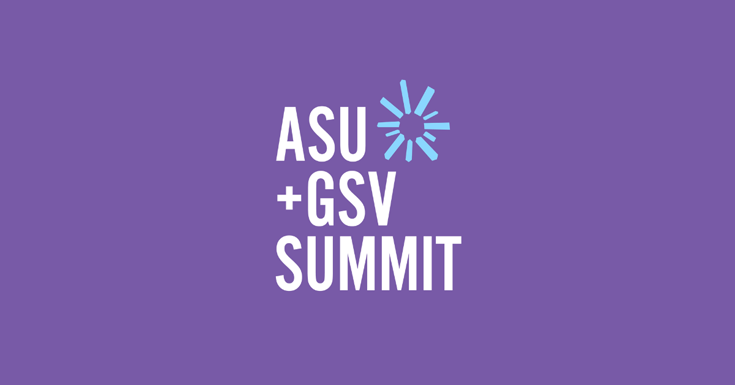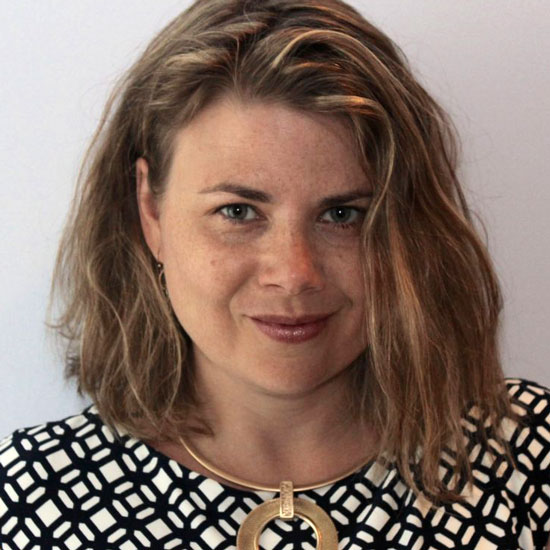Student Success through a Workforce Lens: Hot Takes from the 2021 ASU+GSV Summit
Former Analyst

The 2021 ASU+GSV Summit took place in San Diego (in-person!) last week. For those unfamiliar with it, the conference converges on the intersection of education, workforce, equity work, and educational technology. For example, in one of my favorite first-day moments, JFF Vice President Michael Collins challenged higher education to confront their workforce partners about inequitable hiring practices.
Higher education sessions focused on topics like career services, workforce development, and skills teaching. However, timely concerns like mental health, academic integrity, and student success also surfaced—evidence that these issues are everywhere and impact everyone in the education-to-employment pipeline.
The conference was ambitious and wide-ranging, but clear themes emerged across sessions, hallway conversations, and Twitter feedback. Consensus exists that COVID-19 accelerated change and highlighted the additional need for change in education; no one thinks we will return to things as they were before the pandemic. There were tensions, too, between institutional curation and student choice, discovery and pipeline learning, and collective responsibility and singular accountability. The data evangelists were in fine form but not without detractors who pointed out the gaps between the student data most institutions are using, the data they could be using, and the data they need to use.
Here are some of my other favorite hot takes on student success from the 2021 ASU+GSV Summit.
Student Lifecycle Reconsidered
Higher education institutions tend to emphasize the front end of the student lifecycle. However, ASU+GSV shined a light on the growing importance and impact of advancement and alumni relations. Research suggests that work skills in today’s market have a half-life of five years, which leads to a constant need for reskilling and upskilling. Higher education has an opportunity to support institutional growth, alumni, and employers through personalized and proactive alumni outreach and flexible options for continuing education.
Student Outcomes, Reevaluated
Historically, higher education has focused on enrollment, retention, and completion as fundamental indicators of institutional effectiveness. Over time, it has become increasingly possible to track and report on post-graduation employment. These data are relevant long-term success metrics and should play a more significant role in institutional strategy and effectiveness. Furthermore, schools must be more transparent about the actual return on investment of their programming for potential students—especially if they want to compete with alternative education providers.
Student Success, (Re)defined
COVID-19 changed the way institutions need to think about students and student success. Old definitions that hinge exclusively on academic performance do not support desired student outcomes because those outcomes depend so much on student experience outside the classroom. To be successful, students must thrive in all four pillars of student experience:
- Wellness (mental, physical, financial, and social)
- Academics
- Professional or workforce development
- Personal development
Collective Responsibility and Singular Accountability
“Student success is the responsibility of everyone” could have been a conference tagline. However, multiple speakers also observed that often no one is held accountable when everyone on campus is responsible. The new student success is holistic, and its distributed nature challenges traditional higher educational silos and governance. However, higher education institutions can still define, measure, and be held accountable for it. It matters how institutional leaders talk about student success and how they bring the rest of campus into the fold. Sustained funding, top-down support, cross-functional teams, concrete definitions, and desired outcomes for accountability are essential. (Incidentally, the same observations were made in discussions on student health and wellbeing.)
Integrated Professional Development
Most ASU+GSV higher education sessions focused on the professional development pillar of the student experience. Consensus exists that institutions must assert professional development as an integrated element for every student experience—not a co-curricular option that some students will pursue. To this end, some schools align degree programming to specific careers. Others offer academic credit for microcredentials and skills pathways. Some incentivize skills training with guaranteed interviews with workforce partners.
Curation…
In the 2010s, some campus leaders predicted that LinkedIn and online recruitment sites would render higher education career services irrelevant. However, career services remain an opportunity for students with less social capital to gain exposure to the world of work and create the professional connections essential to success. In the post-COVID era, career services centers are essential, but their role needs to evolve. One speaker argued that career services should not offer students a Cheesecake Factory menu of opportunities (my favorite conference analogy). Instead, staff must curate and personalize options based on student preferences, skills, and goals. AI and integrated institutional and labor market data can help, but the process depends on human relationships and mentorship.
…And Coordination
Economists and labor market analysts delivered a consistent message: The labor market has a coordination problem, not a supply-and-demand problem. It requires a fluidity across time, skillsets, and geography that traditional higher education has not accommodated. Online learning, microcredentialing, and analytics technologies (to match people and opportunities) reduce friction within the education-to-employment pipeline.
Fundamentally Built for Students
“Student-centered” has been a higher education buzzword for decades, but true student-centeredness has been challenging to achieve within the confines of traditional education structures. Some ASU+GSV attendees expressed cautious optimism that the conditions and outcomes surrounding COVID-19 have accelerated the destruction of counterproductive binaries like knowledge versus skills, research versus teaching, and degree- versus non-degree certifications.
Categories
Share Article:

Other Posts From this Author:
© Copyright 2025, The Tambellini Group. All Rights Reserved.